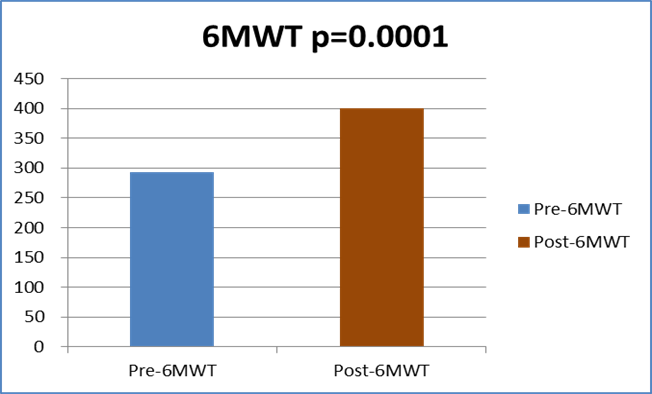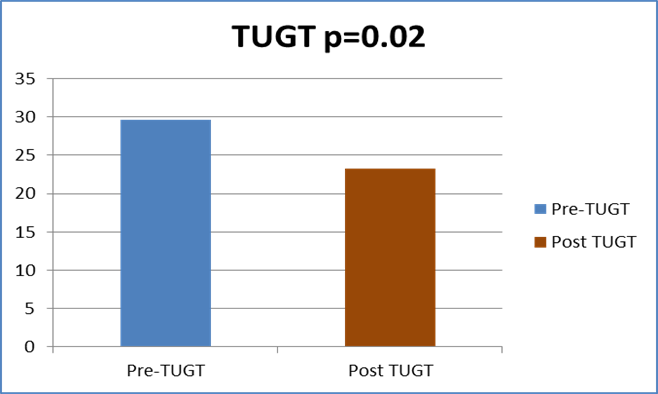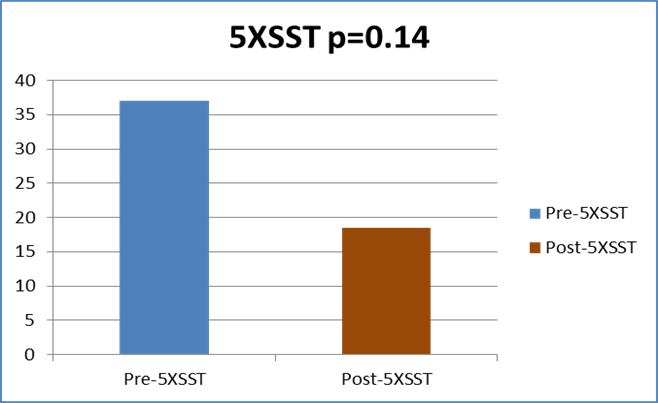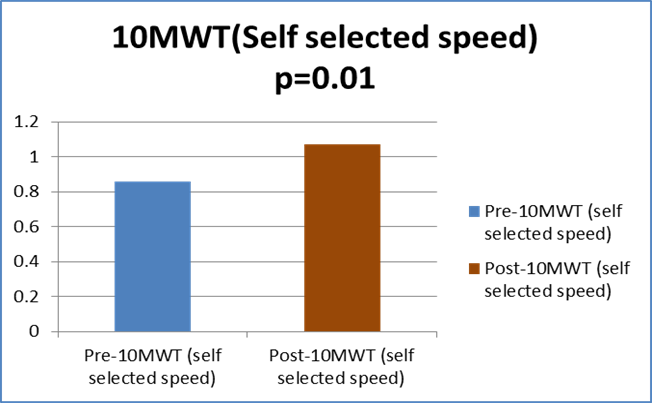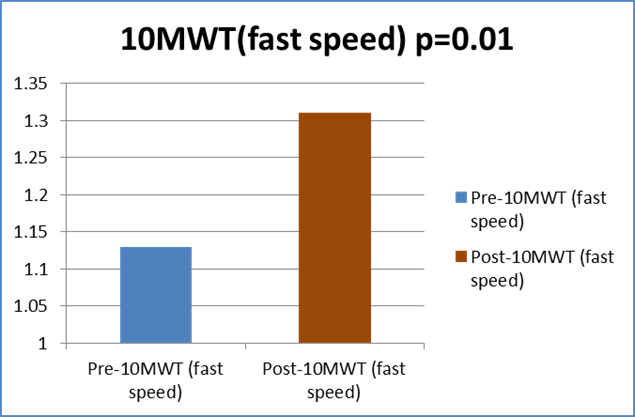Session Information
Date: Saturday, October 6, 2018
Session Title: Parkinson’s Disease: Clinical Trials, Pharmacology And Treatment
Session Time: 1:45pm-3:15pm
Location: Hall 3FG
Objective: To improve the gait stability of Parkinson’s disease(PD) patients by physiotherapy and gait skill training.
Background: Current pharmacological therapy for PD is largely based on a dopamine replacement strategy, which is usually ineffective for nondopaminergic-related symptoms, like gait impairments and postural control. On the other hand, there is evidence suggesting this group of patients could be benefited with physiotherapy and gait skill training.
Methods: PD patients in Hoehn and Yahr stage 2-3 were recruited with preset inclusion and exclusion criteria. Every 5 patients would form a physiotherapy exercise program class. 8 weekly sessions, each lasted 90-120mins, were carried out and supervised by physiotherapists. Physiotherapy exercises included brisk walk, overcoming multiple obstacles, dual upper limb and balance board tasks, and basic to advanced plank. Patients also learnt to use wearable monitoring device, metronome, fall protective gadgets, and walking aids with auditory and visual cues. Each patient also required to practice home exercises of 30min daily. Compliance were ensured by partnership with care-givers and other PD patients, exercise logbook and weekly telephone reminder. Pre, post and 6 month outcomes including six-minute walk test(6MWT), five-times-sit-to-stand test(5XSST), ten meter walk test (10MWT), timed up and go test(TUGT), fall incidents, adverse events, patient satisfaction were studied.
Results: 10 patients enrolled into the program with 2 dropouts. 8 patients (2 males, age range 55-70y, H&Y scale 2-4) completed pre and post assessment. Their mean 6MWT improved from 293m to 401m (p<0.001) (graph 1). Mean TUGT improved from 29.6s to 23.3s (p=0.02) (graph 2). Mean 5XSST improved from 37.1s to 18.5s (p=0.14) (graph 3). Mean 10MWT (self-selected speed) improved from 0.9m/s to 1.1m/s (p=0.01) (graph 4). Mean 10MWT (fast speed) improved from 1.1m/s to 1.3m/s (p=0.01) (graph 5). 5 patients (1 male, age range 55-69y, H&Y scale 2-3) completed pre and 6 month assessment. Their mean 6MWT improved from 373m to 495m (p=0.04). Mean TUGT improved from 12.9s to 8.0s (p=0.11). Mean 5XSST improved from 13.4s to 9.5s (p=0.08). Mean 10MWT (self-selected speed) improved from 1.1m/s to 1.3m/s (p=0.10). Mean 10MWT (fast speed) improved from 1.4m/s to 1.7m/s (p=0.04). No fall episode was noted. Good patient feedbacks were received.
Conclusions: PD patients with impaired gait and postural control may be benefit from a supervised physiotherapy training program in combination with home exercises.
References: 1. Rochester L, Espay AJ, Multidisciplinary Rehabilitation in Parkinson’s Disease: A Milestone With Future Challenge. Mov Disord. 2015 Jul;30(8):1011-3. 2. Yitayeh and Teshome. The effectiveness of physiotherapy treatment on balance dysfunction and postural instability in persons with Parkinson’s disease: a systematic review and meta-analysis. BMC Sports Science, Medicine and Rehabilitation (2016) 8:17.
To cite this abstract in AMA style:
J. Yeung, A. Lau, E. Chan, J. Chung, L. Chan. A Physiotherapy Exercise Program for Parkinson’s Disease Patients with Impaired Gait and Postural Control [abstract]. Mov Disord. 2018; 33 (suppl 2). https://www.mdsabstracts.org/abstract/a-physiotherapy-exercise-program-for-parkinsons-disease-patients-with-impaired-gait-and-postural-control/. Accessed December 28, 2025.« Back to 2018 International Congress
MDS Abstracts - https://www.mdsabstracts.org/abstract/a-physiotherapy-exercise-program-for-parkinsons-disease-patients-with-impaired-gait-and-postural-control/

